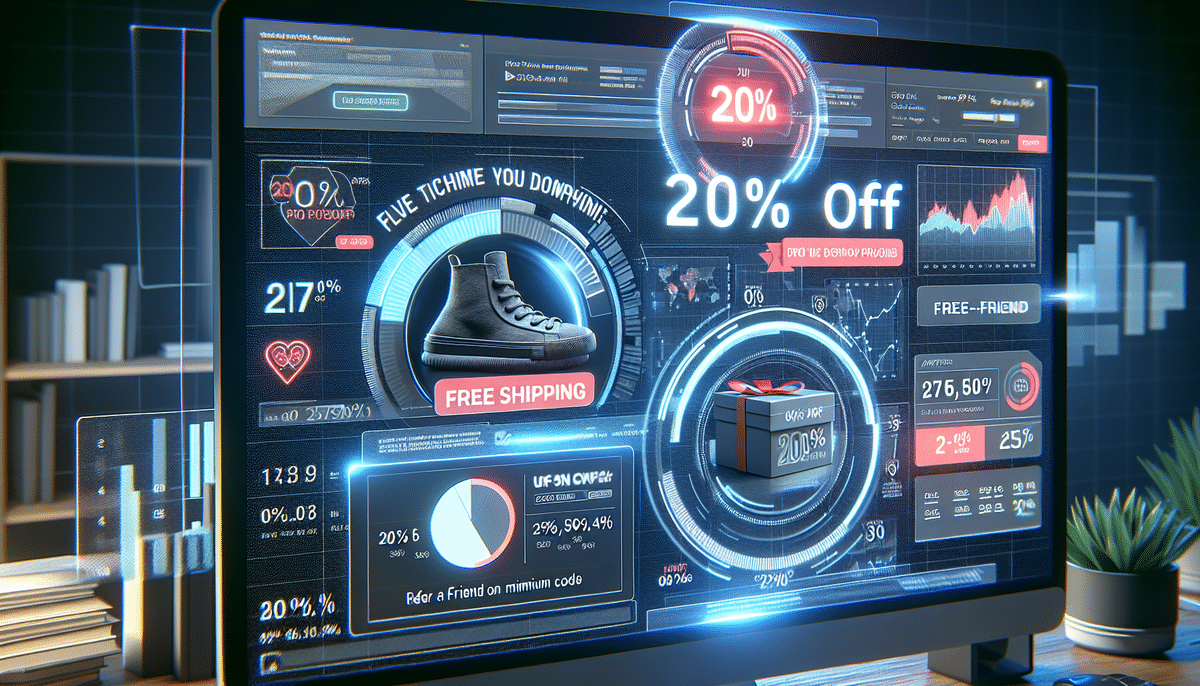As an online retailer of fitness and gym equipment, effective inventory management is essential to the success of your e-commerce business. Poor inventory management can result in overselling of products, lost sales, and ultimately, dissatisfied customers. To avoid this, it is crucial to invest in the right inventory management system. In this article, we will discuss the top 10 inventory management systems for fitness and gym equipment e-commerce businesses.
Why Effective Inventory Management is Important for Fitness and Gym Equipment E-Commerce
Effective inventory management is important for any e-commerce business, but it is particularly crucial for those in the fitness and gym equipment industry. Customers purchasing fitness equipment have high expectations when it comes to quality and functionality, and delays or out-of-stock items can significantly impact their satisfaction and loyalty.
Inventory management systems help to ensure that you have the right amount of stock at the right time, reducing the risk of overselling or understocking products. Additionally, these systems enable you to track and manage inventory levels, monitor product performance, and forecast demand to make informed decisions about restocking and pricing.
Another benefit of effective inventory management is that it can help you identify which products are selling well and which ones are not. By analyzing sales data, you can determine which products are popular and adjust your inventory levels accordingly. This can help you avoid overstocking on products that are not in high demand, which can tie up your cash flow and take up valuable warehouse space.
Furthermore, effective inventory management can also help you reduce the costs associated with carrying excess inventory. By keeping track of your inventory levels and forecasting demand, you can avoid overstocking and reduce the need for costly storage space. This can help you save money and increase your profitability in the long run.
Key Features to Look for in Inventory Management Systems for Fitness and Gym Equipment E-Commerce
When selecting an inventory management system for your fitness and gym equipment e-commerce business, there are several key features to look for:
- Real-time inventory tracking
- Automated restocking and ordering
- Integration with your e-commerce platform
- Forecasting and demand planning capabilities
- Reporting and analytics
- Multi-channel inventory management
Another important feature to consider when selecting an inventory management system for your fitness and gym equipment e-commerce business is the ability to manage and track warranties and repairs. This feature can help you keep track of equipment that needs repairs or replacements, and ensure that your customers are satisfied with their purchases.
Additionally, it is important to choose an inventory management system that is scalable and can grow with your business. As your business expands, you may need to manage larger inventories, multiple warehouses, and more complex supply chains. A scalable inventory management system can help you manage these challenges and ensure that your business continues to run smoothly.
How to Choose the Right Inventory Management System for Your Fitness and Gym Equipment E-Commerce Business
Choosing the right inventory management system for your fitness and gym equipment e-commerce business requires careful consideration of your business needs, budget, and goals. Start by identifying the key features that are most important to your business, and consider the size of your inventory, the number of products you sell, and your sales channels.
It is also important to consider the ease of use and implementation of the system, as well as the level of support and training provided by the vendor. Take advantage of free trials and demos to test out different systems and ensure that they meet your specific requirements.
Another important factor to consider when choosing an inventory management system is its ability to integrate with other software and tools that you use in your business. For example, if you use a specific accounting software or e-commerce platform, you will want to ensure that the inventory management system can seamlessly integrate with these tools to avoid any data discrepancies or manual data entry.
Top Inventory Management Systems for Small Fitness and Gym Equipment E-Commerce Businesses
For small fitness and gym equipment e-commerce businesses, some of the top inventory management systems include:
- TradeGecko
- Cin7
- Square for Retail
- Finale Inventory
- Unleashed
These systems offer a range of features and pricing options to suit the needs and budgets of small businesses.
TradeGecko is a cloud-based inventory management system that offers features such as order management, purchasing, and sales analytics. It also integrates with popular e-commerce platforms such as Shopify and WooCommerce, making it a great option for small fitness and gym equipment e-commerce businesses.
Another top inventory management system for small businesses is Cin7. This system offers features such as inventory tracking, order management, and warehouse management. It also integrates with popular accounting software such as Xero and QuickBooks, making it a great option for businesses looking to streamline their operations.
Top Inventory Management Systems for Large Fitness and Gym Equipment E-Commerce Businesses
For larger fitness and gym equipment e-commerce businesses, some of the top inventory management systems include:
- Zoho Inventory
- DEAR Systems
- Inflow
- Orderhive
- Shiprocket
These systems offer advanced features and capabilities, such as multi-warehouse management and integration with complex sales channels, to meet the needs of larger businesses.
One of the key benefits of using these inventory management systems is the ability to automate many of the processes involved in managing inventory. This can save businesses a significant amount of time and resources, allowing them to focus on other areas of their operations.
In addition, these systems often provide real-time data and analytics, allowing businesses to make more informed decisions about their inventory and sales strategies. This can help businesses to optimize their inventory levels, reduce waste, and improve their overall profitability.
Cloud-Based vs On-Premise Inventory Management Systems: Which is Better for Fitness and Gym Equipment E-Commerce?
Cloud-based inventory management systems are becoming increasingly popular for e-commerce businesses due to their flexibility and convenience. These systems are hosted online, which means they can be accessed from anywhere with an internet connection and do not require any hardware or software installations on-site.
On-premise inventory management systems, on the other hand, are installed directly onto your business's servers and are managed internally. While these systems offer greater control and security, they require a larger initial investment and maintenance costs.
Ultimately, the decision between cloud-based and on-premise systems depends on your business needs, budget, and IT capabilities.
It is important to note that cloud-based inventory management systems offer automatic updates and backups, which can save time and resources for businesses. Additionally, these systems often come with advanced analytics and reporting features, allowing businesses to make data-driven decisions and optimize their inventory management processes.
Pros and Cons of Using Popular Inventory Management Systems for Fitness and Gym Equipment E-Commerce Businesses
Every inventory management system has its advantages and disadvantages, and it is important to carefully evaluate these before making a decision. Some of the pros and cons of using popular inventory management systems for fitness and gym equipment e-commerce businesses include:
- TradeGecko: Pros - affordable pricing, comprehensive features; Cons - limited customization options.
- Cin7: Pros - multi-channel support, extensive reporting and analytics; Cons - steep learning curve, expensive pricing.
- Square for Retail: Pros - intuitive interface, affordable pricing; Cons - limited inventory management features.
- Zoho Inventory: Pros - extensive integrations, feature-rich; Cons - limited customer support.
- DEAR Systems: Pros - advanced features for larger businesses, automation capabilities; Cons - complex setup, expensive pricing.
Aside from the pros and cons of each inventory management system, there are other factors to consider when choosing the right one for your fitness and gym equipment e-commerce business. One important factor is scalability. As your business grows, you need an inventory management system that can keep up with your increasing demands. Another factor is ease of use. You want an inventory management system that is easy to navigate and understand, so that you can quickly and efficiently manage your inventory.
It is also important to consider the level of customer support provided by each inventory management system. You want to choose a system that offers reliable and responsive customer support, so that you can quickly resolve any issues that may arise. Additionally, you may want to consider the level of security provided by each system, as you want to ensure that your inventory data is protected from potential security breaches.
How to Integrate Your Inventory Management System with Your Fitness and Gym Equipment E-Commerce Platform
Integrating your inventory management system with your fitness and gym equipment e-commerce platform can streamline your operations and improve efficiency. Most inventory management systems offer integrations with common e-commerce platforms such as Shopify, WooCommerce, and Magento.
To integrate your systems, simply follow the instructions provided by the vendor or consult with your IT team. Be sure to test the integration thoroughly and monitor for any issues or errors.
It is important to note that not all inventory management systems may offer integrations with your specific e-commerce platform. In this case, you may need to consider using a third-party integration tool or custom development to connect the two systems. Additionally, it is recommended to regularly review and update your integration to ensure it is functioning properly and meeting your business needs.
Best Practices for Successful Implementation of Inventory Management Systems in Fitness and Gym Equipment E-Commerce
Implementing an inventory management system can be a complex process, but there are several best practices that can help ensure success:
- Invest in training and support for your team
- Ensure data accuracy and consistency
- Regularly review and update inventory levels
- Monitor system performance and identify areas for improvement
By following these best practices, you can maximize the benefits of your inventory management system and improve the overall efficiency and profitability of your fitness and gym equipment e-commerce business.
In conclusion, selecting the right inventory management system is vital to the success of your fitness and gym equipment e-commerce business. By considering your business needs, budget, and goals, and evaluating the features and capabilities of different systems, you can make an informed decision that will help your business grow and thrive.
Another important best practice for successful implementation of inventory management systems in fitness and gym equipment e-commerce is to establish clear communication channels between your team members. This will help ensure that everyone is on the same page and that any issues or concerns can be addressed in a timely manner.
Additionally, it is important to regularly analyze your inventory data to identify trends and patterns. This can help you make informed decisions about purchasing, pricing, and marketing strategies, and can ultimately lead to increased sales and profitability.









